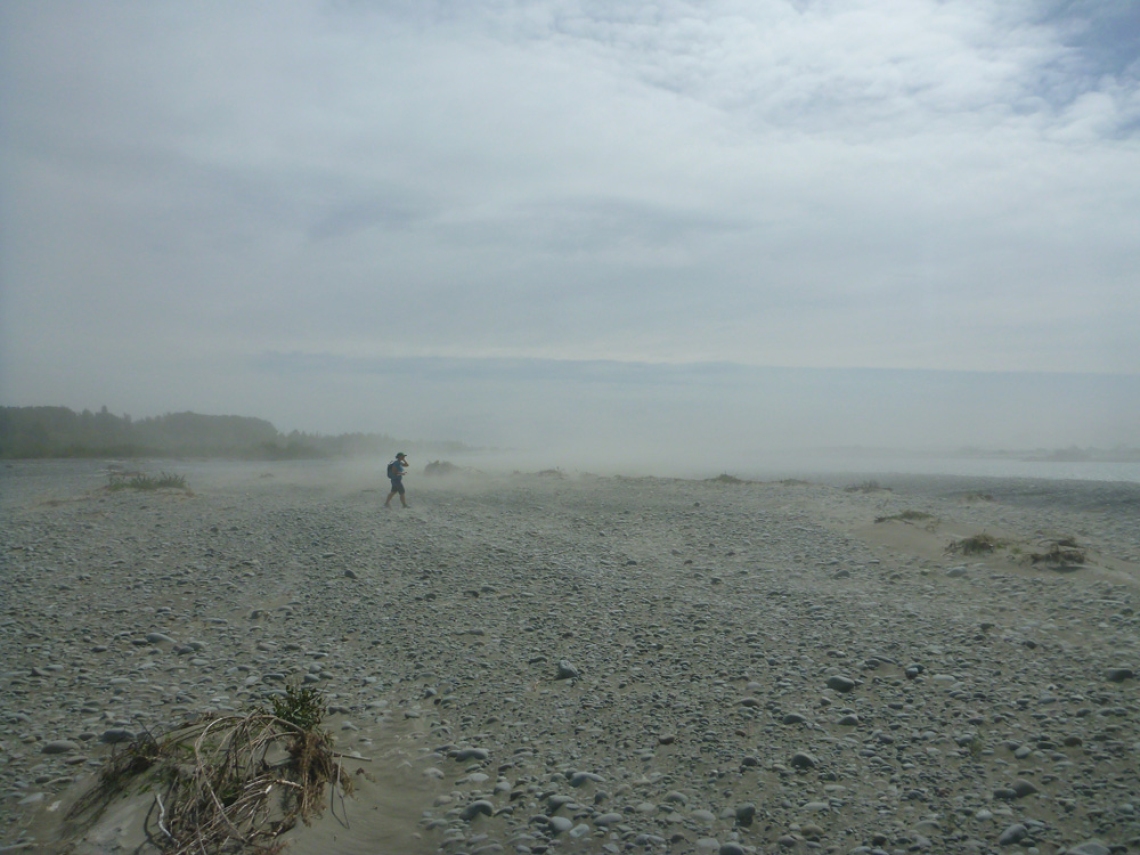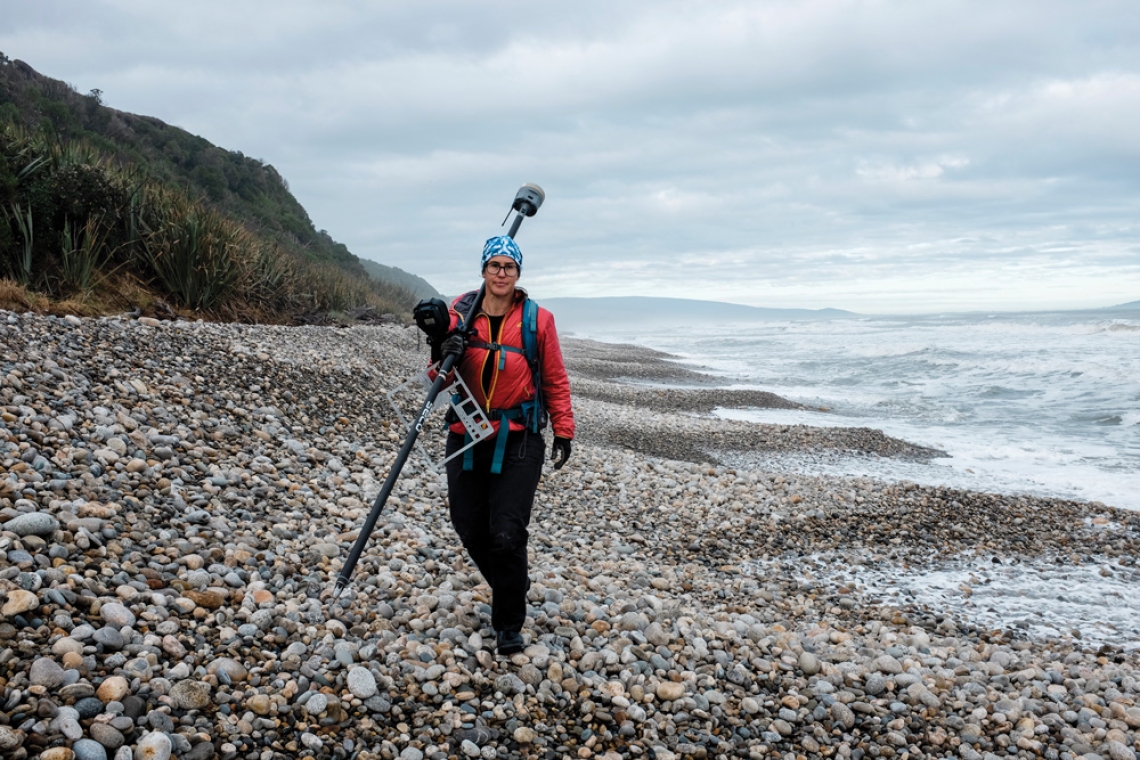Caroline Beamish meets a braided river specialist, and Wahine Toa, on a mission to let our rivers flow.
For most of us, getting caught in gale-force winds on the banks of the Rangitata River, with sand and debris whipping at your legs and face, wouldn’t be described as fun. But for Dr Jo Hoyle, it’s "type two fun".
And she’s not alone. As manager of NIWA’s sediment processes group, Jo leads a team of eight river researchers, tied together by a love of their work and the outdoors.
“We do seem to find ourselves often doing quite hard and difficult fieldwork. It’s really fun. Even if it’s not fun at the time, it’s fun afterwards,” she says.
Growing up in Kerikeri with both parents working as physical education teachers, it’s no surprise that Jo enjoys challenging herself. She has also always had an affinity for rivers.
A keen whitewater kayaker, she took a year off after school to represent New Zealand at the junior world championships, before completing an undergraduate degree in natural resources engineering.
Fast forward a couple of decades, and Jo is a braided river expert, working as a river geomorphologist. Her focus is on how rivers change over time in response to variations in flow and sediment supply.
It’s a job that requires hard days in the field, but Jo, who has biked the length of New Zealand, the width of the North Island and completed the Coast to Coast, loves it.
Prior to this she worked as a river engineer, where traditional river management practices – managing flood risk – were the norm. But Jo’s interest was in a much wider approach.
“I enjoyed that job, but I was interested in whether there were different ways of doing things, things that worked with the river a little bit more.”
As if in answer to her musings, an opportunity in Australia presented itself, and before she knew it, Jo was on a plane across the ditch to undertake a PhD in river geomorphology.
Her studies involved working on a river restoration project with five PhD students, each bringing their own perspectives. Jo enjoyed the interconnected approach and has carried it through to her work today.
“It involves understanding a river as a whole. Not just its physical behaviour, but the life in it, and the processes that occur within a river and how they support each other,” she says.
Now back in New Zealand, a big part of Jo’s role at NIWA involves working with Meridian Energy’s hydroelectricity group, providing not just her own geomorphology expertise, but knowledge from the wider freshwater team, be it about water quality, invertebrates or native fish.
“It’s really interesting work and I enjoy it because it involves understanding these applied problems and working with people with different expertise to try and provide that holistic information.”
There are few practising geomorphologists in New Zealand, and even fewer of them are women. A testament to Jo’s talent and expertise, she took home the 2021 Rivers Group Wahine Toa Award.
The award recognises a female role model who is leading the way in a river-related field, though Jo says she doesn’t see herself as a role model.
“I still feel like one of the young ones, but I’m coming to this realisation that I’m not anymore,” she laughs.
Braided rivers are particularly special to Jo. More than 150 of New Zealand’s rivers are braided, an impressive number considering that globally these rivers are rare, only occurring in mountainous areas where there is a steady supply of sediment.
“Braided rivers are really interesting, they’re super dynamic and adjusting all the time.”
“But ours are under threat. I’m passionate about them because we can see them diminishing in front of us. Every year we seem to be losing more and more braided riverbed.”
For generations, communities have been developed alongside rivers, building increasing protection measures to hold back floods.
But recent devastating events, such as the Canterbury floods two years ago and Cyclone Gabrielle, have highlighted the need to rethink how we manage our rivers.
“We do everything right up to the edge of a river and we’re trying to control the river. But rivers are naturally dynamic, they’re always shifting and moving,” says Jo.
“When a big flood hits, the river will burst its banks. And we’re going to get more and more of that happening with climate change.”
Jo says she would like to see rivers treated as dynamic rather than static.
She knows it’s a complex issue that requires balancing multiple considerations, but Jo is hopeful, that in the long-term, a broader approach to river management will be taken.
“We need to work with them instead of trying to control them, because really, we’re just not as strong as them.”


